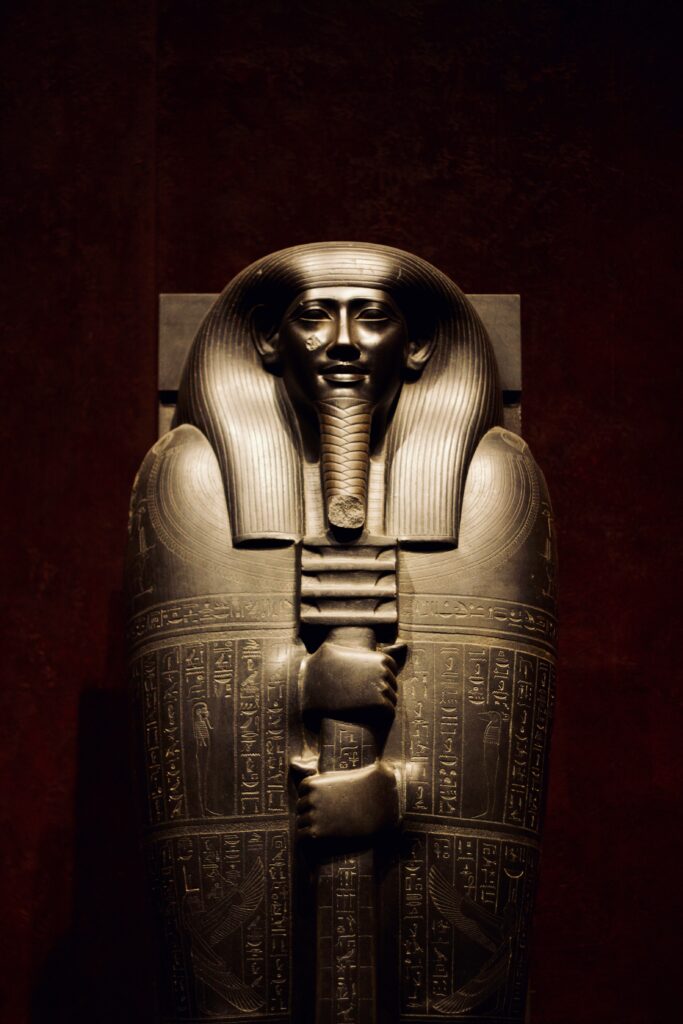For this week I was looking into the origins of tattoos outside of the western viewpoint. This led me to some very interesting information about Egyptian mummies and tattoos, Pacific Island traditions and many more. As I touched on in my blog post last week this is an extremely broad topic with so much to cover and I am just barely scratching the surface.
One of the articles I found for this week included a list of all the naturally mummified human bodies where the were found, the culture they likely belonged to and the approximate year. This was very interesting as the earliest mummified body to be found was from between 3370-3100 BC1. There are also mummified bodies from all over the world from (what is now) China, Russia, Egypt, and even Peru.

Another Article I found went into great detail on how mummied bodies were examined so as to determine the details of the tattoo without damaging the body. It was extremely interesting as it explained how they use infrared cameras to determine the makeup of the pigment used to tattoo the skin2. This was extremely interesting to me because I had never given too much thought into how meticulous and careful you would have to be in the process of working with a mummy especially for something like a tattoo. Unfortunately both these articles did not go too far into the meaning or significance of the tattoos they had found on the mummies, as they said the meaning could not be ascertained at this time. Both articles were very scientifically focused which was very interesting for me as I have mainly been seeing the historical side up until now.
Another article I found was focused on how many Maori people are using Moko, their traditional tattoos, as a form of renewal and resistance. This article made a clear distinction between the western ideas of tattoos and Moko. This article argues that the connotations of tattoo are deeply rooted in western ideas and unfamiliar places and people, whereas Moko is the embodiment of self in Maori culture and part of everyday normal culture3. The article also interviewed people who had chosen to receive Moko and explored things such as how they came to the decision and what it means to them.
I really enjoyed learning about some of the Maori traditions surrounding Moko and would like to look more into it in more detail as well as other cultures. So, for next week I will take a deep dive into the traditions of one specific culture for my blog post.
I’ve attached a Tik Tok where a Maori person and Moko wearing speaks to their knowledge of Moko, and I have also included a news article about the first Maori Moko wearer to present on daytime news. I thought this was very cool and I hope we continue to see more things like this!
https://www.cnn.com/style/article/new-zealand-maori-news-journalist-tattoo-scli-intl/index.html
RESOURCES
Deter-Wolf, A., Robitaille, B., Krutak, L., Galliot, Sébastien.
The World’s Oldest Tattoos. Journal of Archaeological Science: Reports. Volume 5. 2016. Pages 19-24. https://doi.org/10.1016/j.jasrep.2015.11.007.
Nikora, L.W., Rua, M. and Te Awekotuku, N. (2007), Renewal and resistance: moko in contemporary New Zealand. J. Community. Appl. Soc. Psychol., 17: 477-489. https://doi-org.ezproxy.library.uvic.ca/10.1002/casp.942
Friedman, R., Antoine, D.,Talamo, S., Reimer, P.J., Taylor, J.H., Wills, B., Mannino, M.A. Natural mummies from Predynastic Egypt reveal the world’s earliest figural tattoos. Journal of Archaeological Science. Volume 92. 2018. Pages 116-125. https://doi.org/10.1016/j.jas.2018.02.002



emma
February 27, 2022 — 6:45 pm
Hello, Lucy.
It was insightful to read about the distinction made between [i]moko[/i] and tattoos, particularly tattoos in the Western sense. I recall from one of your earlier posts that the trend of tattooing in the West did start–or at least ramp back up–due to exposure to cultures in which body markings were widespread, which is to say, they became popular precisely for being exotic, although if memory serves, Western sailors began choosing specific marks for various sailing experiences (crossing the equator, for instance), which would argue that they were developing their own culture of tattooing, even if they had gotten the idea from somewhere else.
I appreciate that you posted a variety of resources for your reader to turn to for further information, from a Tic-Toc to academic articles. It certainly displays the breadth of your own research.
I admit it is a minor, personal point, but I am heartened to see someone else who still uses the BC/AD dating notation rather than the increasingly common BCE/CE. I understand the intent behind the modern, politically correct notation, but as it is simply a lazy relabelling of a pre-existing system, I cannot reconcile myself to it.
I wonder if you might consider working with a thesaurus or otherwise, to vary your phrasing: in your first three paragraphs, you used “very interesting” three times and “extremely interesting” twice. Reducing repetition would draw the reader in more.
Additionally, from a formatting standpoint, you used a superscript notation to reference your research articles, but you did not number those references when you listed them. Indeed, given that superscript “2” pointed to an article including information concerning the use of infrared cameras on long-dead mummies, but the second article listed in your reference section is entitled, [i]Renewal and resistance: moko in contemporary New Zealand[/i], it would seem that the articles are not listed in calling order, turning the act of seeking to learn more into an unnecessary puzzle for the reader.
kstockli
March 7, 2022 — 11:51 am
Hi Lucy,
This was a very cool post to read as these are two cultures I know little about. I remember learning about ancient Egypt in school but tattoos were never mentioned. The first journalist with facial marking on the news was interesting to see as it shows people are becoming more accepting of face tattoos, especially those with cultural significance.
I also noticed that the foot note numbers don’t match the order they are listed at the bottom of the post.
I am curious on why to include Egyptian and Maori people in the same post? I don’t know much about them so are they connected in some way or did you find similar things that you thought fit well together?
Overall, it was an interesting and informative post.
-Kasey